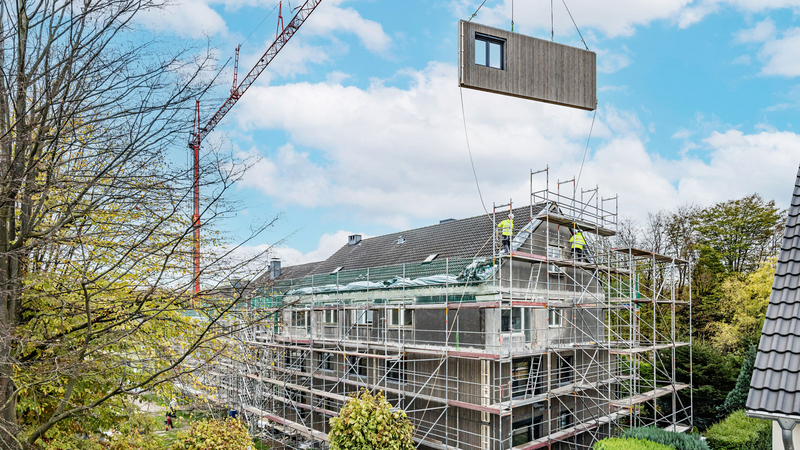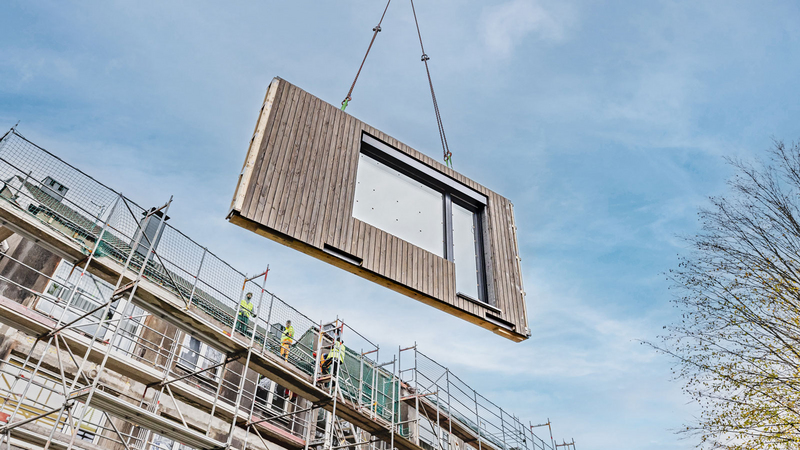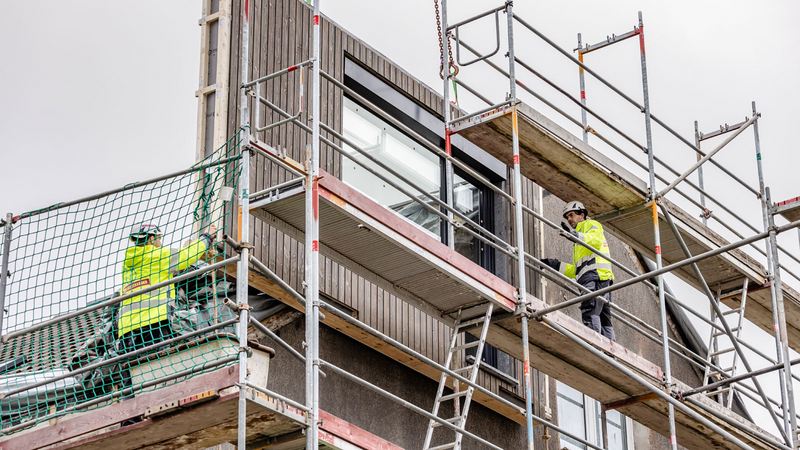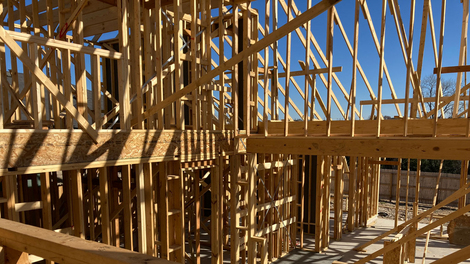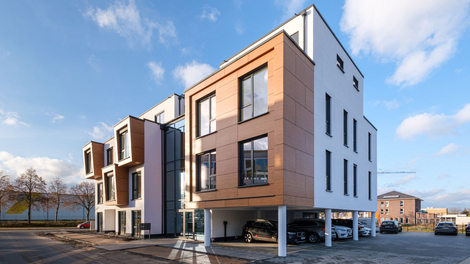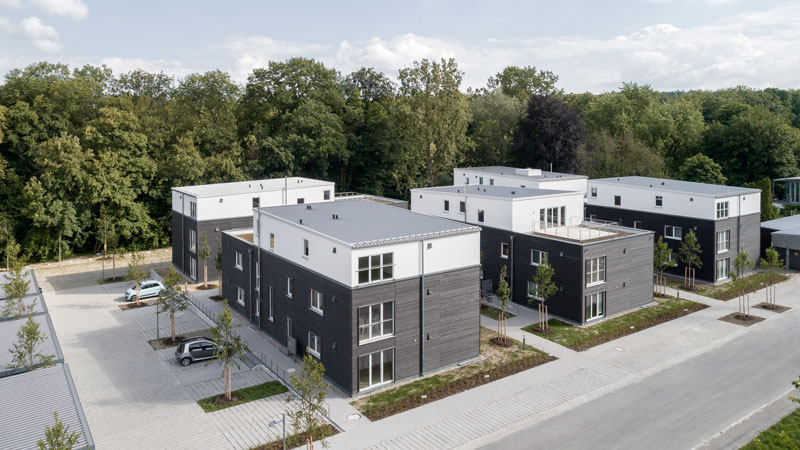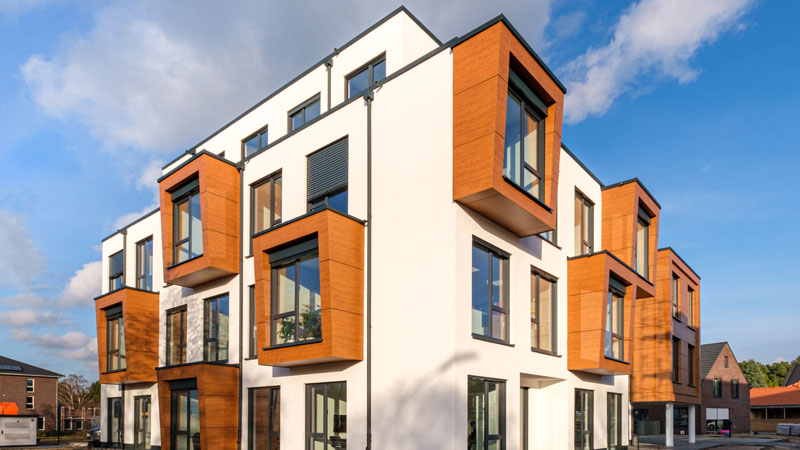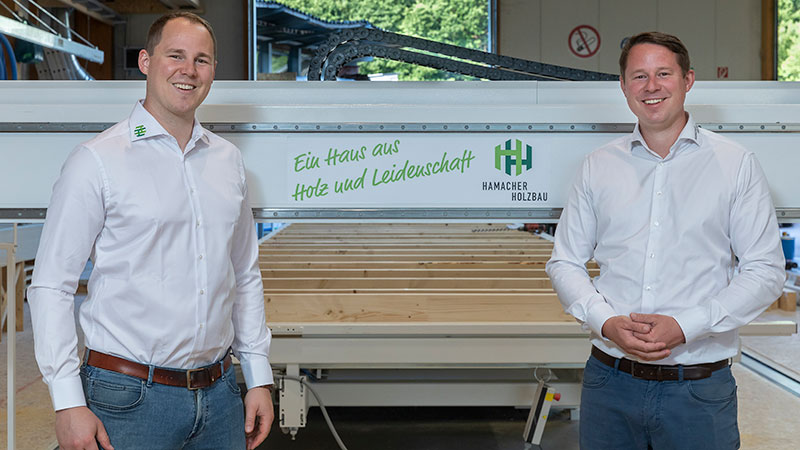Renovation of existing buildings for CO₂-neutral living
Renovating existing buildings to increase their level of energy efficiency is one of the current market trends in timber construction. Emanuel Heisenberg is CEO and founder of the company ecoworks. The German start-up has set itself the task of digitalizing and industrializing energy-efficient renovations for the housing and construction industry, with the aim of making existing buildings climate-neutral quickly and in an appealing way.
Mr. Heisenberg, what role do existing buildings play in achieving climate protection goals?
The building sector is responsible for 38% of greenhouse gas (GHG) emissions worldwide. In Germany alone, 3.4 million apartments in apartment buildings will need to be renovated in the next few years. Across Europe, the number of worst-performing buildings—i.e. buildings with energy efficiency class H—is estimated to be ten times higher. So one thing is quite clear: We can no longer ignore the renovation of existing buildings! It will play an essential role in achieving climate targets. In Europe alone, we are talking about around 20,000 apartments a day. This is the only way we can achieve the current climate targets and prevent global warming from exceeding a maximum of 1.5 degrees. What is needed now is CO₂-neutral buildings, and to achieve this, we need to triple the rate of renovation. In our view, serial renovation is the most promising path to date. This allows us to plan and implement economic buildings now and thereby make an important contribution to climate neutrality in this sector.
How does serial renovation differ from conventional renovation and what are the benefits of this?
Traditionally, 95% of energy-efficient renovation work on an existing building is done directly on the construction site. This often means that tenants have to move out for an extended period of time. Performing the work on site often also means that the process is unproductive in many areas. In turn, this drives up the costs of the renovation. The process is different for serial renovation. We relocate up to 80% of the processes to the factory. Here, the insulated façade elements are prefabricated precisely on an industrial scale. This means that they arrive complete at the construction site and can be attached directly and in a minimally invasive way, saving time and therefore also reducing costs. In addition to production, we can also plan the energy supply digitally in advance. Renovation significantly reduces the energy consumption of the building and the remaining demand can be met using renewable energies such as heat pumps and photovoltaic systems. In addition, depending on the project, building owners can benefit from a 35–45% repayment grant for serial renovations. In other words, the larger the project, the cheaper it is to produce the façades in series. Serial renovation therefore represents an innovative and minimally invasive approach to the systematic, energy-efficient renovation of buildings. Using this approach, we will significantly increase the renovation rate in Germany.
What role does your company play in implementing these plans and who are your customers?
I founded ecoworks in 2018. The workforce has grown to more than 150 employees within 5 years. We were definitely the "pioneer" of the serial renovation industry in Germany. It all started with a white paper, which I wrote for the parliamentary groups in the German Bundestag on the topic of energy transition in heating. At that time, I had seen the serial renovation of terraced houses in the Netherlands and recommended bringing the technology to Germany. Ultimately, we completed this ourselves at ecoworks and implemented the first serial renovation in Germany in Hamelin. Today, we have 14 projects in the planning phase or under construction. The demand for our concept is growing. In the meantime, other construction companies have also recognized the importance of serial renovation and have positioned themselves accordingly. That confirms to us that the need is there — ultimately, we need much more competition and innovation to decarbonize existing real estate, the world's largest class of assets, in which 68 percent of our wealth is tied up. At the moment, we offer our renovation package for apartment buildings with two to five stories. This is therefore aimed primarily at housing companies and housing associations, but also project developers. Unfortunately, serial renovation for detached and semi-detached houses is not yet profitable. However, as with many comparable technologies, there will also be scaling effects here over time, which will reduce costs and therefore open up more application possibilities. Our next step will be to work on solutions for other building classes. We are also receiving increasing inquiries from schools and office buildings, so we want to carry on developing our product.
What further development do you expect in the renovation of existing buildings over the coming years? (In Germany but also in Europe/worldwide)
In the long term, the renovation industry will be adapted to sectors such as the automotive industry. It will become a matter of course for an owner of an existing building to be able to select and order the components for renovation in a catalog. We already use a configurator of this kind. With our new software and hardware platform, we will continue to push ahead with the scaling of serial renovation. Our vision is that one day, it will be possible to configure a renovation with a few clicks, automatically plan it to the greatest extent possible and subsequently track it on site via the app. In addition to technical developments like these, however, the volume and standardization of a few subsystems will bring major changes. These kinds of developments bring us closer to a world in which climate-neutral living is affordable for everyone.
What opportunities will this offer for timber construction companies?
ecoworks is currently working with three timber construction companies. When choosing our partners, three aspects are particularly important to us: the quality must be right, scalability must be ensured through increasing capacities, and we want to be able to develop the wood frame construction elements together. In future, the timber construction industry will have to become more innovative and provide its own engineering capacities. Machine manufacturers will also be required to adapt robotics from other industries to the applications of serial production of building shells. Development is moving away from handmade one-offs to a real mass production with production processes that have long been established in other industries. Wood is an important building material for storing CO₂ in newly renovated buildings over 50 or 100 years. Wood is also very cheap and has ideal properties for the business case. However, timber construction must continue to open up in order to remain the decisive factor for the "Renovation Wave" in Europe.

